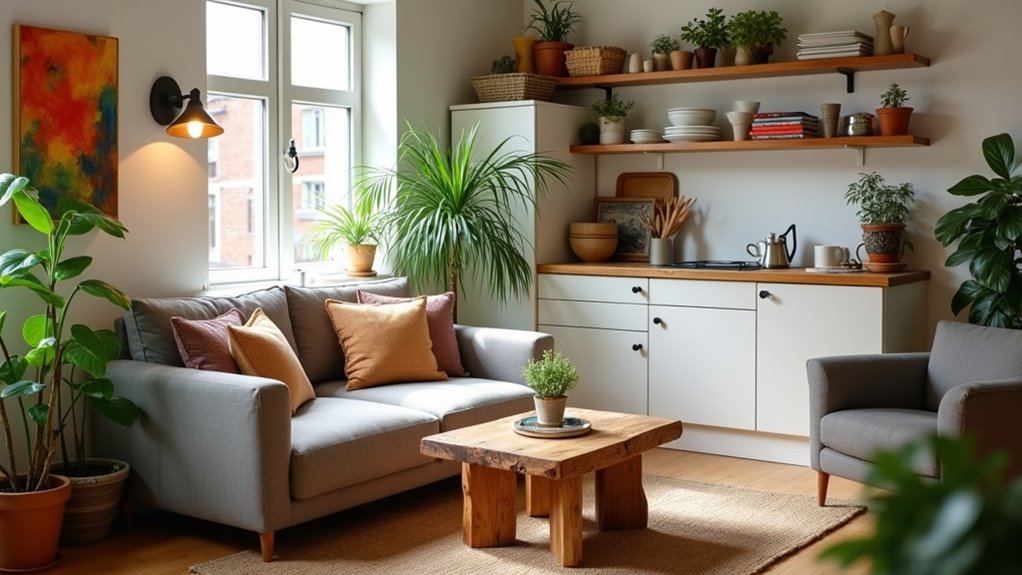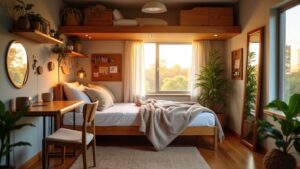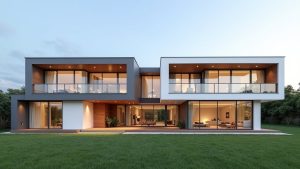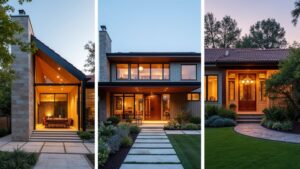To design a small house on a low budget, maximize space with multi-functional furniture, such as sofa beds and folding tables, which minimize the need for excess furnishings. Optimize layouts by embracing open concept designs that enhance usability and natural light. Incorporating sustainable features like bamboo materials and energy-efficient systems not only reduces costs but also creates a healthier home. Explore these effective strategies further to discover additional innovative solutions tailored for compact living spaces.
Key Takeaways
- Invest in multi-functional furniture like sofa beds and folding tables to maximize limited space and functionality without clutter.
- Utilize an open concept layout to create a more spacious feel while minimizing the number of walls and furniture pieces needed.
- Incorporate built-in storage solutions, such as shelves and hidden cabinets, to effectively reduce clutter and make the most of every square foot.
- Choose eco-friendly materials and energy-efficient systems to save on costs and reduce environmental impact while enhancing home durability.
- Leverage natural lighting through strategic window placement and light colors to brighten interiors and cut down on energy expenses.
Maximize Space With Multi-Functional Furniture
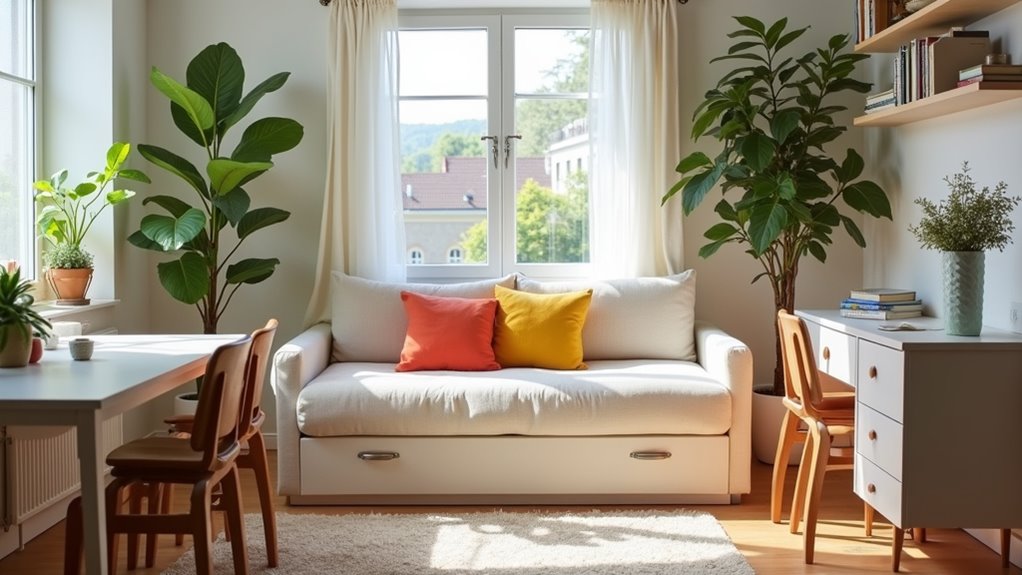
In small living spaces, where every square foot counts, the clever use of multi-functional furniture emerges as a practical solution for maximizing utility and comfort. Multi-functional tables, such as those that serve as dining surfaces or workspaces, reduce the need for excess furnishings while cleverly incorporating hidden storage options. Sofas, including sofa beds and pull-out designs, transform seamlessly from seating to sleeping areas, catering to the demands of urban dwellers. Additionally, seating innovations like folding chairs and stackable stools exemplify convertible designs, allowing for easy reconfiguration. This trend is fueled by the growing demand for multifunctional furniture as urbanization increases, with many people opting for compact homes. As the small space furniture market is projected to grow steadily over the next decade, it highlights the importance of innovative solutions in small house design. Incorporating multi-functional furniture not only enhances functionality but also promotes a more organized and aesthetically pleasing environment.
Optimize Layouts for Efficiency
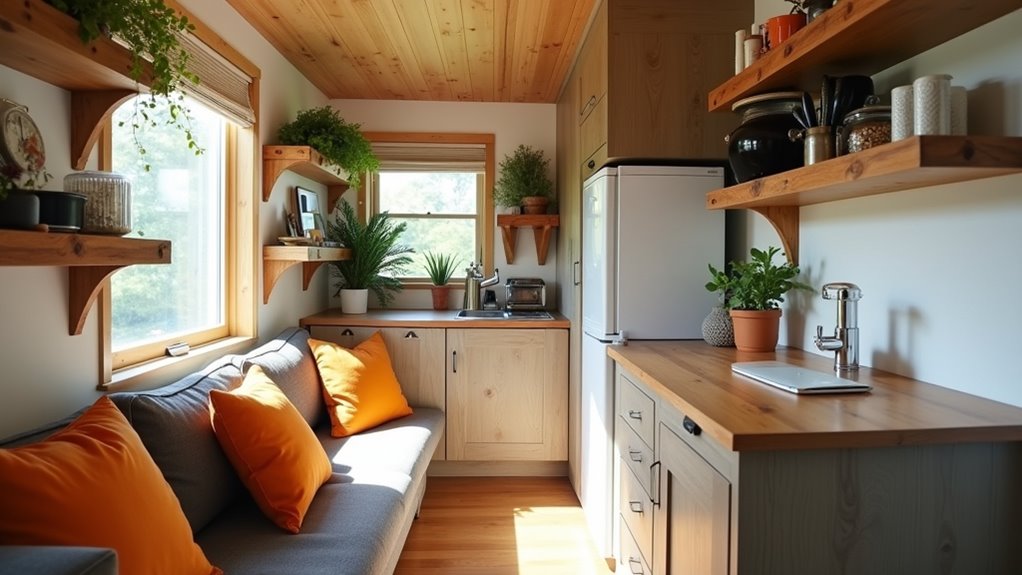
Here are four key strategies:
- Choose Square or Rectangular Layouts: These shapes simplify furniture arrangement and promote seamless transitions.
- Adopt Open Concept Designs: Combining living spaces maximizes usability and creates a sense of spaciousness, all without adding square footage.
- Leverage Natural Lighting: Positioning rooms for optimal sunlight not only brightens interiors but also reduces reliance on artificial lighting.
- Utilize Corners: Built-in storage solutions in corner areas enhance efficiency and minimize clutter.
Implementing these tools harnesses every inch of space while promoting a cozy, adaptable living environment. Additionally, opting for simple gable roofs can further simplify construction costs while enhancing overall design appeal.
Incorporate Sustainable Features
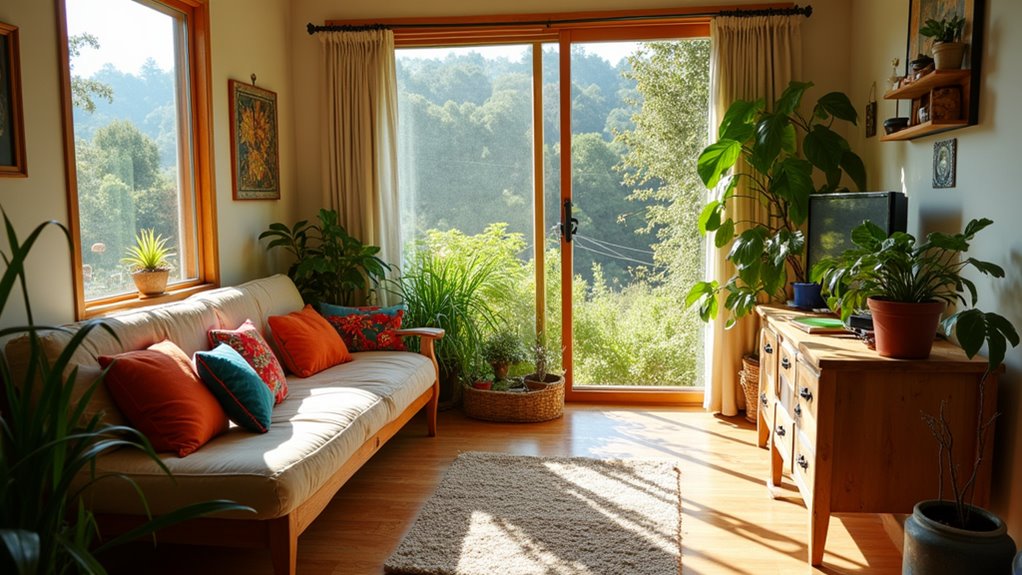
Sustainable features can dramatically enhance the appeal and functionality of small house designs, particularly when thoughtfully integrated into the overall framework. The incorporation of green materials, such as bamboo and reclaimed wood, not only reduces environmental footprints but also lowers costs compared to conventional options.
Prefabricated homes offer robust energy-efficient systems, including solar power and rainwater collection, which contribute to significant energy savings and self-sufficiency. Natural insulation materials and earthship designs leverage recycled substances, providing effective thermal regulation. Additionally, implementing passive solar techniques and water conservation systems, like greywater recycling, fosters a more sustainable living environment. Overall, these budget-friendly strategies not only improve aesthetics but also create a healthier, more sustainable space for residents. Furthermore, using eco-friendly designs can help enhance the durability and resilience of homes against typhoons and tropical climates.
